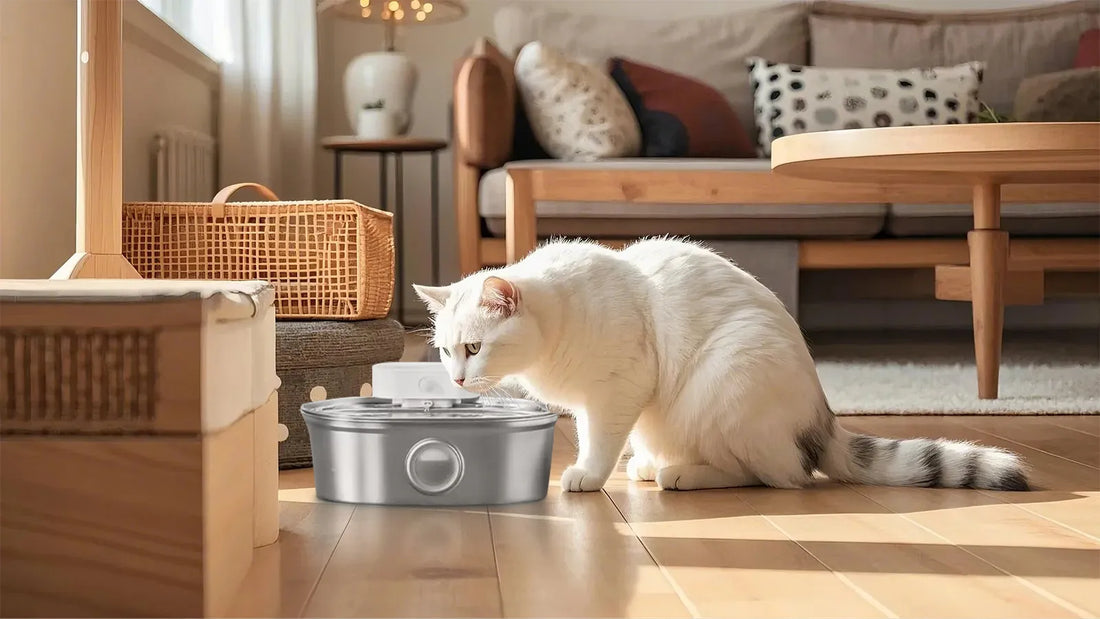When it comes to feeding your beloved pet, ensuring their safety and comfort is paramount. A nonslip dog bowl is an essential tool that can make mealtime more enjoyable for both you and your dog. But with so many options available, how do you choose the right one? This guide will walk you through everything you need to know about nonslip dog bowls, from their benefits to the key features to look for.
What is a Nonslip Dog Bowl?
A nonslip dog bowl is specifically designed to stay in place while your dog eats. Unlike traditional bowls that can slide around, especially on hard surfaces like tile or wood, nonslip bowls have features that prevent movement. This ensures that your dog can eat without the bowl shifting, which can be frustrating and even dangerous for some pets.
Benefits of Using a Nonslip Dog Bowl
There are several advantages to using a nonslip dog bowl:
- Safety: A bowl that stays in place reduces the risk of spills and accidents, which can be particularly important for older dogs or those with mobility issues.
- Comfort: Dogs can eat more comfortably when their bowl doesn't move around, leading to a more enjoyable mealtime experience.
- Hygiene: Spilled food and water can create a mess that attracts pests and bacteria. A nonslip bowl helps keep the feeding area clean.
- Durability: Many nonslip bowls are made from high-quality materials that are designed to withstand regular use and cleaning.
Key Features to Look for in a Nonslip Dog Bowl
When shopping for a nonslip dog bowl, consider the following features:
- Material: Look for bowls made from durable, non-toxic materials that are easy to clean. Common options include stainless steel, silicone, and BPA-free plastic.
- Base Design: The base of the bowl should have a nonslip surface, such as rubber or silicone, to prevent it from sliding on smooth floors.
- Size: Choose a bowl that is appropriately sized for your dog. Larger dogs will need bigger bowls, while smaller breeds may prefer something more compact.
- Weight: A heavier bowl is less likely to tip over, especially if you have a larger or more energetic dog.
- Ease of Cleaning: Opt for a bowl that is dishwasher safe or easy to clean by hand to maintain hygiene.
How to Choose the Right Nonslip Dog Bowl for Your Pet
Selecting the right nonslip dog bowl depends on your dog's specific needs. Here are some tips to help you make the best choice:
- Consider Your Dog's Size: Larger dogs will need bigger bowls to accommodate their food and water intake, while smaller breeds may prefer something more compact.
- Think About Your Dog's Eating Habits: If your dog tends to eat quickly, a bowl with a slow feeder design can help prevent choking and improve digestion.
- Evaluate Your Home's Flooring: If you have smooth, hard floors, look for a bowl with a strong nonslip base to prevent sliding.
- Check for Allergies: Some dogs may have allergies to certain materials, so choose a bowl made from hypoallergenic materials if necessary.
Tips for Maintaining Your Nonslip Dog Bowl
To ensure your nonslip dog bowl remains in good condition, follow these maintenance tips:
- Regular Cleaning: Clean the bowl after each use to prevent the buildup of bacteria and food residue.
- Inspect for Wear and Tear: Check the bowl regularly for signs of damage, such as cracks or worn-out nonslip surfaces, and replace it if necessary.
- Store Properly: Store the bowl in a dry, cool place to prevent mold and mildew growth.
- Use Appropriate Cleaning Products: Avoid harsh chemicals that could damage the bowl or harm your dog. Stick to mild soap and water or pet-safe cleaning products.
Common Mistakes to Avoid When Using a Nonslip Dog Bowl
While nonslip dog bowls are designed to make mealtime easier, there are some common mistakes pet owners should avoid:
- Choosing the Wrong Size: A bowl that is too small or too large can make eating uncomfortable for your dog.
- Neglecting to Clean the Bowl: Dirty bowls can harbor bacteria and lead to health issues for your pet.
- Ignoring Wear and Tear: A damaged bowl can lose its nonslip properties and become unsafe for your dog to use.
- Using Harsh Cleaning Products: Strong chemicals can damage the bowl and potentially harm your dog if not rinsed thoroughly.
Frequently Asked Questions About Nonslip Dog Bowls
Here are some common questions pet owners have about nonslip dog bowls:
- Are nonslip dog bowls dishwasher safe? Many nonslip dog bowls are dishwasher safe, but it's always best to check the manufacturer's instructions to be sure.
- Can I use a nonslip dog bowl for both food and water? Yes, nonslip dog bowls can be used for both food and water, but it's a good idea to have separate bowls for each to maintain hygiene.
- How do I know if my dog needs a nonslip bowl? If your dog's current bowl slides around or tips over during mealtime, a nonslip bowl may be a good investment.
- Are nonslip dog bowls suitable for all dog breeds? Yes, nonslip dog bowls are suitable for all breeds, but it's important to choose the right size and design for your dog's specific needs.
Investing in a nonslip dog bowl is a simple yet effective way to enhance your pet's mealtime experience. With the right bowl, you can ensure that your dog eats safely, comfortably, and without any unnecessary mess. So why wait? Make the switch to a nonslip dog bowl today and see the difference it can make for your furry friend!













